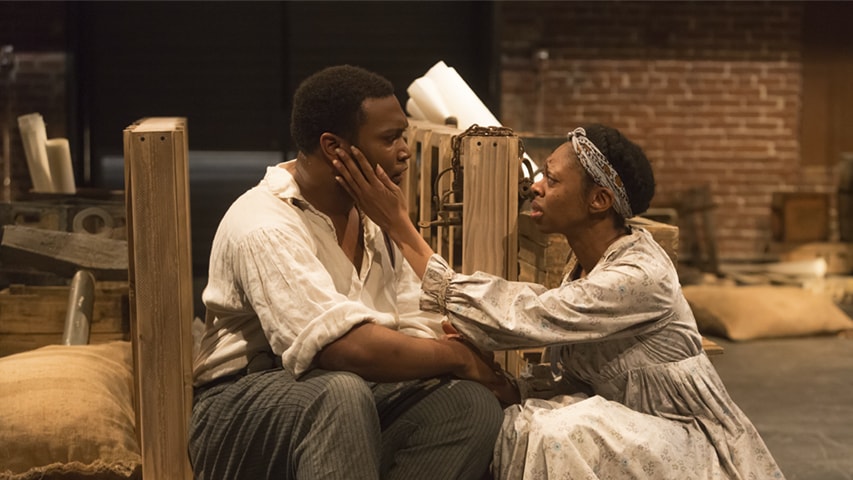Artists Reconstruct Story of African-American Folk Hero

Monteze Freeland and Delana Flowers perform "JH: Mechanics of a Legend" at the New Hazlett Theater in 2015. Image credit: Renee Rosensteel and New Hazlett Theater CSA Series
The story of John Henry, the super-strong railroad man who died with a hammer in his hand, is being brought to life Feb. 9-18 at The August Wilson Center in downtown Pittsburgh.
Anya Martin, an adjunct professor in Carnegie Mellon University's School of Drama, was inspired to create the play several years ago after reading "Steel Drivin' Man: John Henry, the Untold Story of an American Legend" by Scott Reynolds Nelson.
"John Henry is known in literary circles as symbolizing the conflict of Man vs. Machine," said Martin, founding artistic director of the Hiawatha Project, the production company that is staging the play. "I was thinking about machines we are racing against now and what are the modern day hammers that we'll die with in our hands. ... Nelson's book basically tracks back to the 'real' John Henry and after reading it, I thought, it was not technology that killed John Henry, it was societal machines."
These tragedies and current events have made us sit together as a group and pause for these moments and realize the many ghosts in the room with us. — Anya Martin
As Martin workshopped the piece, 17-year-old Trayvon Martin was shot in Orlando by a neighborhood watch volunteer, which along with recent police shootings raised the level of racial tensions in the United States.
"Throughout the course of the past two-and-a-half years, these police shootings have happened, and that — and the Black Lives Matter movement — have greatly influenced the work," Martin said. "These tragedies and current events have made us sit together as a group and pause for these moments and realize the many ghosts in the room with us."
"JH: Mechanics of a Legend" is comprised of primary sources, many being memoirs of slaves from the 1870s and 1880s, so the company is mining history to turn the story of John Henry inside out.
"[Reconstruction is] a time in our history that we don't know and don't talk about," said Edda Fields-Black, associate professor of history at Carnegie Mellon, and adviser to the show. "'JH' really sheds light on some periods in African-American history that were horrible. Just the kinds of everyday violence and sheer horror they faced were unthinkable. We don't want to go there, but one way to process it is through the arts. A lot of people don't want to read [about it], but they will go to a play."
Fields-Black is one of 15 artistic collaborators who have worked to bring "JH: Mechanics of a Legend" to life. The team's approach of using primary sources to create the play made having collaborators a critical aspect.
"'JH: Mechanics of a Legend' is the kind of production you know will challenge, upset and impact you for the better all in one fell swoop," said Britton Mauk, a 2013 CMU graduate who is part of the show's design team.
Related: